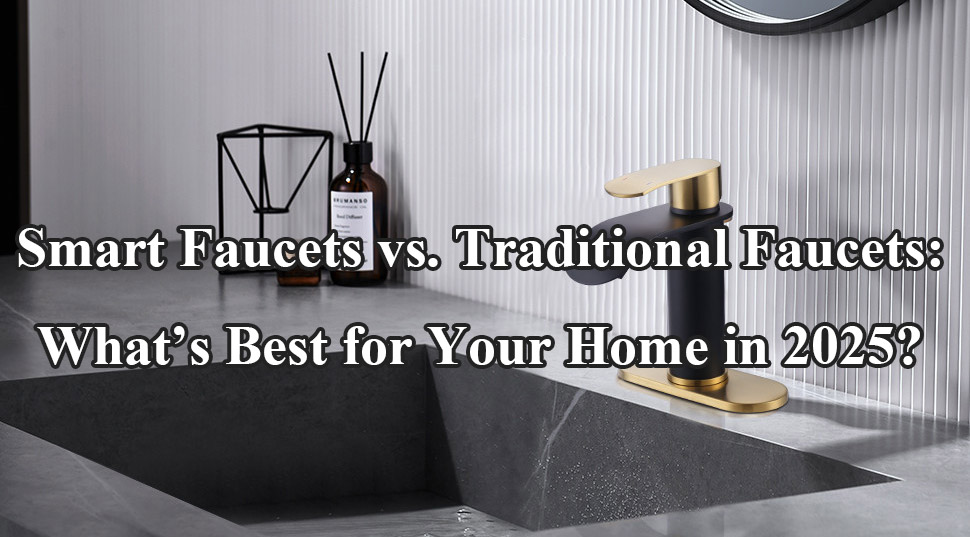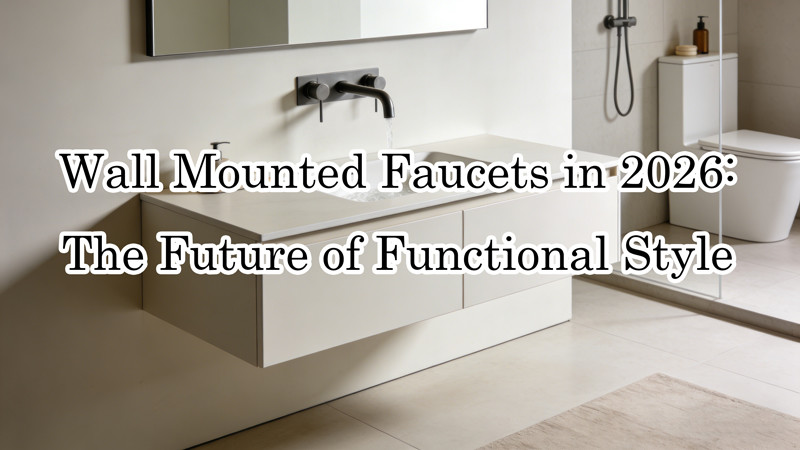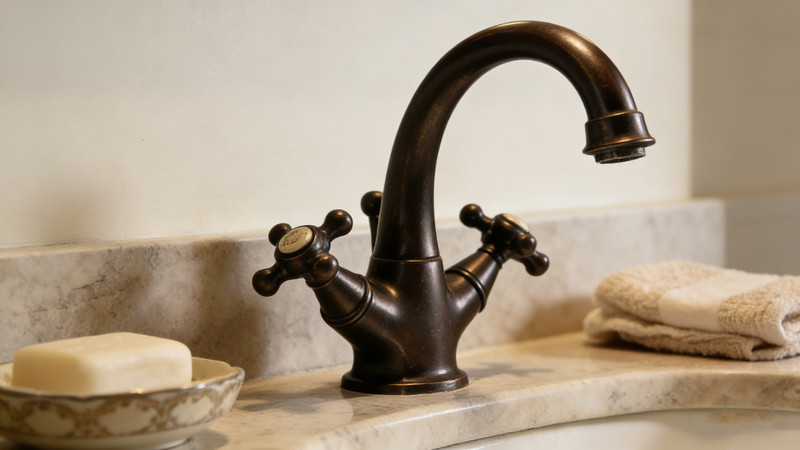
In 2025, the debate between smart faucets and traditional faucets is heating up as more homeowners explore the potential benefits of technology in their kitchens and bathrooms. Faucets are no longer just functional pieces of plumbing; they’ve evolved to become integral elements in home design, efficiency, and even sustainability. Whether you’re renovating your kitchen or upgrading your bathroom, understanding the differences between smart and traditional faucets can help you make an informed decision about which option is best for your home.
What Are Smart Faucets?
Smart faucets are part of the growing trend of connected home devices that integrate technology to improve functionality, convenience, and energy efficiency. These faucets typically come with features like touchless operation, temperature and flow control via apps, and voice activation. Some advanced models can even monitor water usage and alert you to potential leaks or abnormal flow patterns.
One of the main selling points of smart faucets is their ability to reduce water waste by offering precise flow control and automatic shut-off mechanisms. For example, a touchless faucet will stop dispensing water once your hands are no longer under the spout, reducing the risk of accidental water waste. Additionally, smart faucets often have customizable settings, allowing users to adjust the temperature and flow according to their preferences with minimal physical contact.
Smart faucets come with several high-tech features, such as:
- Motion Sensors: Automatically turn on/off when detecting motion.
- Voice Control: Integration with voice assistants like Alexa, Google Assistant, or Siri.
- Temperature Control: Adjust the water temperature using an app or voice command.
- Water Usage Tracking: Provides data on how much water you’re using, helping you reduce waste.
- Leak Detection: Some models can detect leaks or unusual flow patterns and send alerts to your phone.
What Are Traditional Faucets?
Traditional faucets, on the other hand, offer a more straightforward, manual operation. They come in a variety of designs, from classic, turn-handle faucets to lever-operated models. These faucets are simple, reliable, and generally less expensive than their smart counterparts. Traditional faucets work through mechanical valves that control water flow and temperature, giving users direct, hands-on control.
While traditional faucets lack the high-tech features of smart faucets, they still come in a range of styles and materials, including chrome, stainless steel, and brushed nickel, to suit different design aesthetics. The primary appeal of traditional faucets is their simplicity and familiarity—many homeowners prefer the tactile feel of turning a handle or lever to adjust water flow and temperature.
Comparing Smart Faucets and Traditional Faucets
When deciding between a smart faucet and a traditional faucet, there are several factors to consider. Both options have distinct advantages and drawbacks, depending on your priorities.
1. Convenience and User Experience
Smart faucets excel in convenience, particularly with features like motion sensors and voice activation. Imagine being able to turn on your faucet without touching it, or adjusting the water temperature with a simple voice command. This convenience is particularly helpful in a kitchen, where your hands may often be full or covered in food. For families with young children or elderly individuals, smart faucets can eliminate the need to touch handles, making it easier for everyone to use the faucet.
Traditional faucets, by contrast, require more manual effort. You need to physically adjust the handles to change the temperature and flow, which can be a hassle when your hands are messy. However, the simplicity of traditional faucets appeals to those who prefer straightforward, no-fuss operation.
2. Water Conservation and Efficiency
One of the key selling points of smart faucets is their water conservation capabilities. Smart faucets are often designed to minimize water waste by automatically shutting off when not in use or providing real-time water usage data. This can help households reduce their overall water consumption, which is both environmentally and financially beneficial.
Traditional faucets, while generally more reliable in terms of longevity, can be more prone to water waste, especially if they’re left running unintentionally or aren’t as efficient in controlling flow. However, if you’re mindful about turning off the faucet when not in use, traditional faucets can still be a water-efficient option.
3. Durability and Maintenance
Traditional faucets are known for their reliability and durability. With fewer moving parts and no reliance on batteries or electronics, they tend to last longer and require less maintenance. Traditional faucets may only need occasional cleaning or replacement of washers, and they often have a longer lifespan than smart faucets.
Smart faucets, on the other hand, are more complex. They have electronic components and sensors that can wear out over time. The reliance on batteries or electrical connections can also pose a challenge if the power goes out or the batteries need replacing. While many smart faucets are built with durability in mind, you may encounter issues like sensor malfunctions or battery drain, which can require repair or replacement.
4. Price and Value
The initial cost of a smart faucet can be significantly higher than that of a traditional faucet. Depending on the features and brand, smart faucets can cost anywhere from $200 to $700 or more. While this may seem like a steep investment, the added features and potential savings on water bills can make them worthwhile for some homeowners.
Traditional faucets are much more affordable, with prices ranging from $50 to $200 for high-quality models. If you’re looking for a budget-friendly option without compromising on style or functionality, a traditional faucet may be the best choice.
5. Aesthetic Appeal and Design
Both smart and traditional faucets come in a variety of designs to complement different home styles. However, smart faucets often feature sleek, modern designs, with high-tech finishes and minimalist aesthetics. These faucets are typically found in contemporary kitchens and bathrooms, where design and functionality need to work together.
Traditional faucets, on the other hand, come in a broader range of classic and vintage styles. If you’re renovating a traditional or farmhouse-style home, a classic faucet may be a better fit. These faucets can be more versatile when it comes to design, allowing homeowners to choose from a variety of finishes and decorative elements.
Which Is Best for Your Home in 2025?
Choosing between a smart faucet and a traditional faucet depends on your personal preferences, home style, and priorities. If you’re looking for advanced functionality, water conservation, and a high-tech experience, a smart faucet might be the right choice for you. On the other hand, if you prefer simplicity, durability, and a budget-friendly option, a traditional faucet could be the best fit.
In 2025, we’ll likely see even more innovations in both categories, making it easier for homeowners to choose a faucet that suits their needs. Whether you prioritize cutting-edge technology or timeless design, both smart and traditional faucets have something to offer. Ultimately, it’s about finding the right balance between convenience, efficiency, and style for your home.
 WOWOW Faucets
WOWOW Faucets




